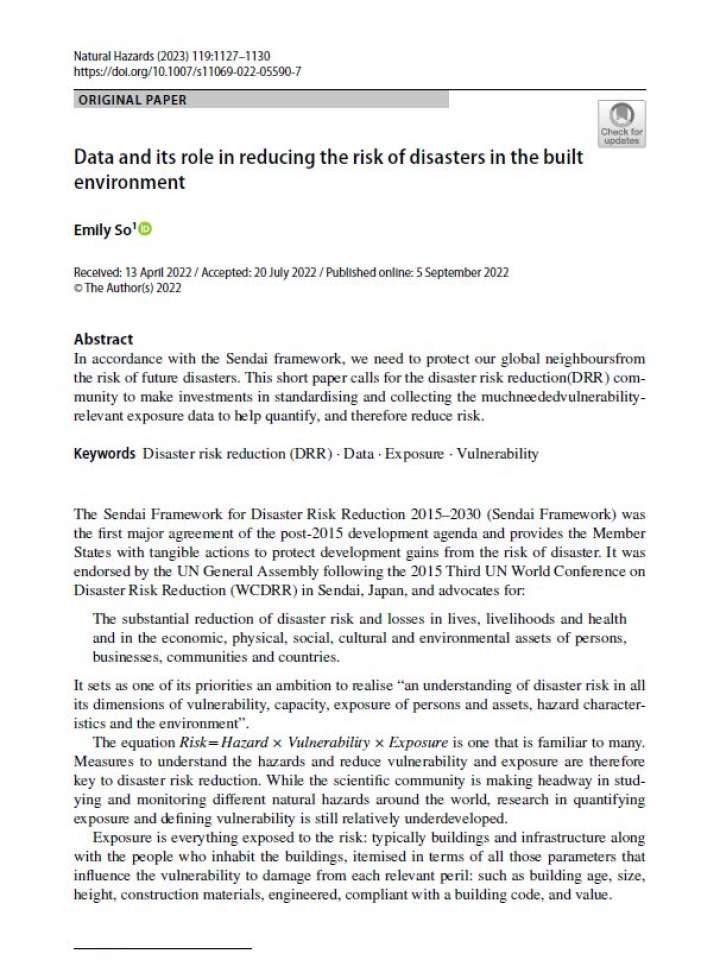Data and its role in reducing the risk of disasters in the built environment
This short paper calls for the disaster risk reduction (DRR) community to make investments in standardising and collecting the muchneeded vulnerability-relevant exposure data to help quantify, and therefore reduce risk. Complementing exposure data are vulnerability functions that would estimate the likely damage to different built assets at certain levels of threat. The lack of high-quality data, both analytical and empirical, for function validation and development has been the key issue here. As with exposure data, there are many disaster-prone countries of the world that do not have vulnerability functions for many hazards and asset types.
There are therefore still far too many unknowns to realise a comprehensive understanding of global disaster risk. The study proposes the below steps one could consider:
- Agree on a standardised set of vulnerability-relevant exposure data for different natural perils, and make a concerted effort to acquire knowledge of the key factors that affect building vulnerability in different territories in the world. Exposure data is often held in private and public repositories. The lack of transparency and standardisation on what and how data is collected is hampering progress in quantifying risks.
- Develop innovative approaches to collect asset data at a local and global scale. For example, examining machine learning methods to identify from satellite imagery, allied with digital ground data, those parameters of the exposure that will determine, or infer, each building's vulnerability to the relevant perils at that location. This could be made publicly available and provide a global benchmark for scrutiny.
- Agree on vulnerability function development methodologies and global data-sharing practices.
Explore further

